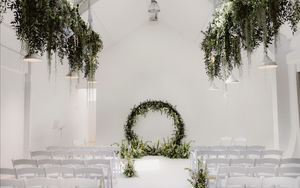Neil Sowerby follows in the chalky footsteps of a great German artist
A GREY Baltic Sunday morning in Greifswald and I am setting off for Hamburg. Three hours away. All along the train red-clad Polish football fans are sharing the same journey, clutching six packs of Tyskie lager and flagons of vodka. Ahead of their Euros kick-off against the Netherlands they are in good heart. So am I but for a very different reason. My cherished Hamburg goal is a painting of a faceless, frock-coated man gazing out over a sea of mist.
Tread carefully along the tracery of footpaths into the deep forest. If you are very lucky you might spot a white-tailed eagle or peregrine falcon
Greifswald, home town of one Tony Kroos, Germany’s midfield maestro, is also the birthplace of Romantic painter Caspar David Friedrich, whose masterpiece this is. A view of Der Wanderer über dem Nebelmeer (1818) in the Hamburger Kunsthalle is the perfect way to celebrate the 250th anniversary of one of Germany’s greatest artists. Not a household name in the UK, but he should be. His enigmatic, numinous images etch themselves into your brain.
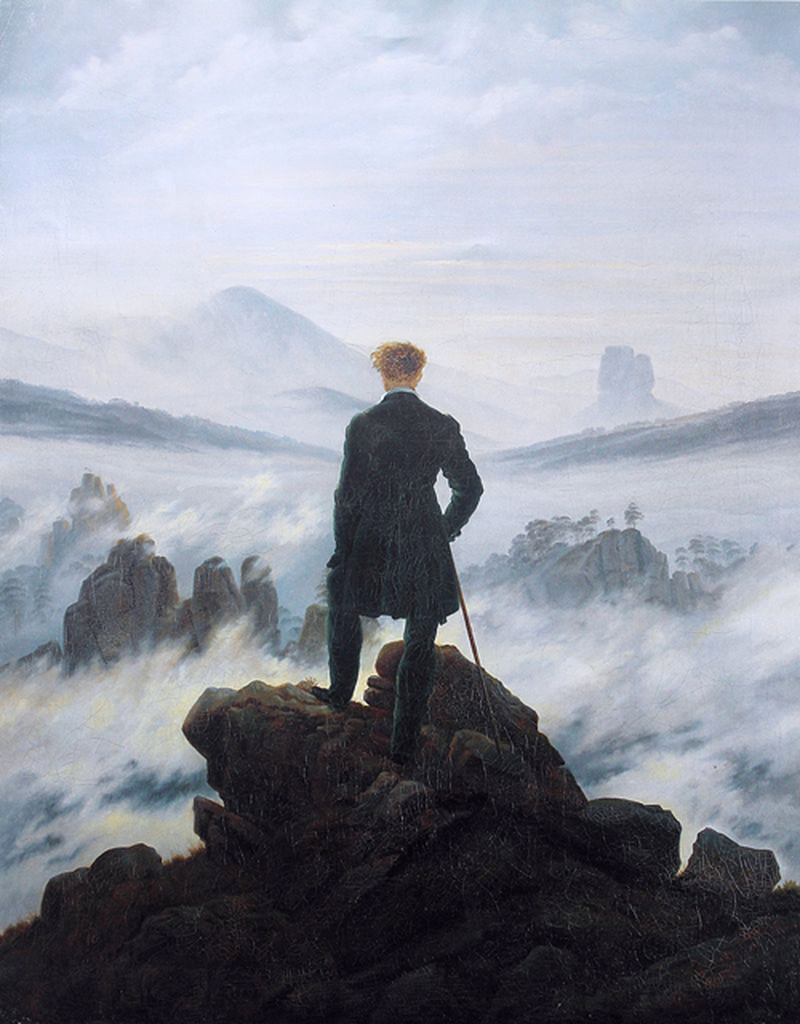
Pomerania in 1874 was a province of Prussia. In the Middle Ages Greifswald and neighbouring coastal cities had formed part of the independent Hanseatic League, its wealthy traders leaving a legacy of Gothic churches and gabled, brick warehouses along the quays.
In the aftermath of World War II the territory was divided between East Germany and Poland. Like Sleeping Beauty in the Grimms’ fairy tale, the handsome town centres were left to slumber. In some cases rot. After the Iron Curtain crumbled and Germany was reunited their tourist value was recognised and investment poured into renovation. My excuse for visiting what is now the state of Mecklenburg-Vorpommern was the artist called Caspar and the landscapes that inspired him, but this unspoilt coastline deserves the attention of any curious traveller.
Not least for being a very different destination from the over-heated Med. Anyone for herring and schnapps and bracing encounters with ancient forests, pristine beaches and spectacular white cliffs? You won’t regret it.

Rügen Island chalks up a Romantic icon
Hard to call it a best-kept secret. The Germans themselves appreciate the region’s charms. Take Rügen, the country’s largest island at nearly 1,000 sq km. Each year it attracts well over a million visitors to long-established but low key resorts such as Binz, Sassnitz and Sellin, strung out along 600km of indented coastline.
A fair percentage make it to the chalk cliffs of Königsstuhl (King’s Chair). On our visit the heritage centre’s 185m skywalk, pronging out over a 380ft cliff face, was selfie heaven. A major reason for being here is the Friedrich painting the spot inspired, Chalk Cliffs on Rügen. In stark contrast to today’s ticketed tourism the work’s trio of figures are once more looking away – out into an infinite Baltic seascape.

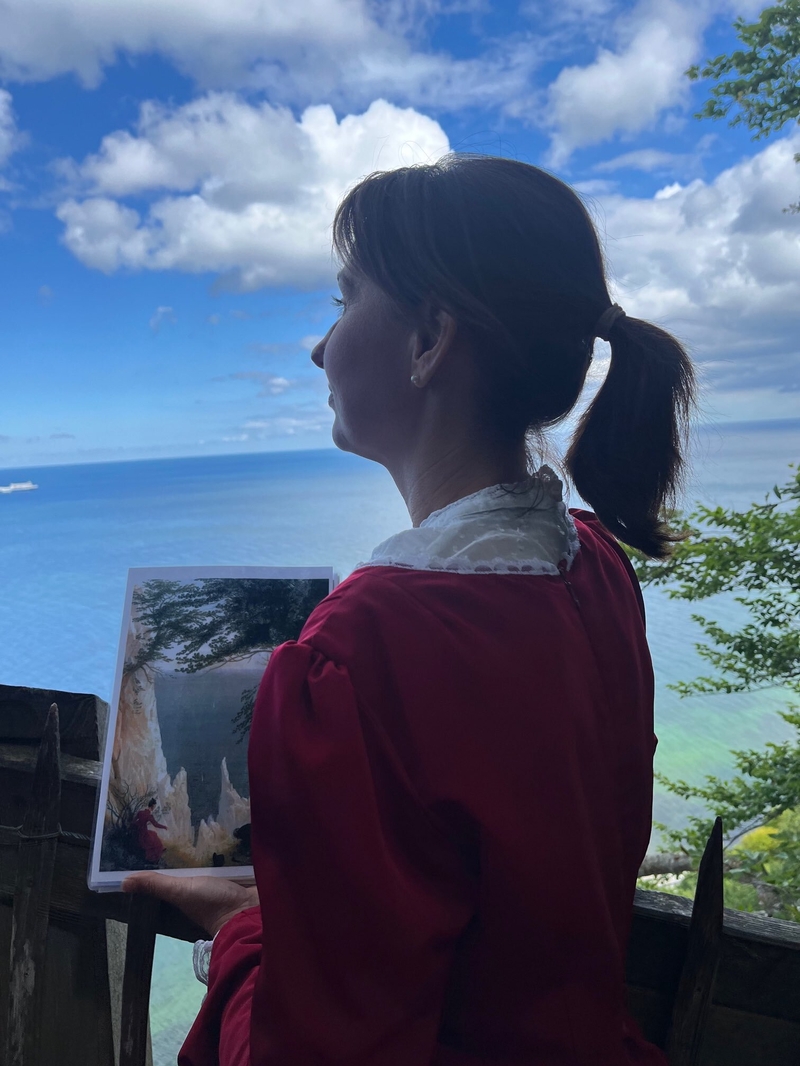
But that’s CDF, introverted Romantic dreamer, who after early acclaim died in ill health and penury. Still the effort is made to make him ‘sexier’. Friedrich married late and in 1818 brought his much younger wife Caroline from their Dresden home for a honeymoon on his hallowed turf. So our guided tour features a lass in period costume as Frau Friedrich, who leads us to the view that inspired Chalk Cliffs. Art not quite imitating life. Friedrich always sketched landscapes and then ‘arranged’ them later on canvas, so you never get Impressionist-style replicas.
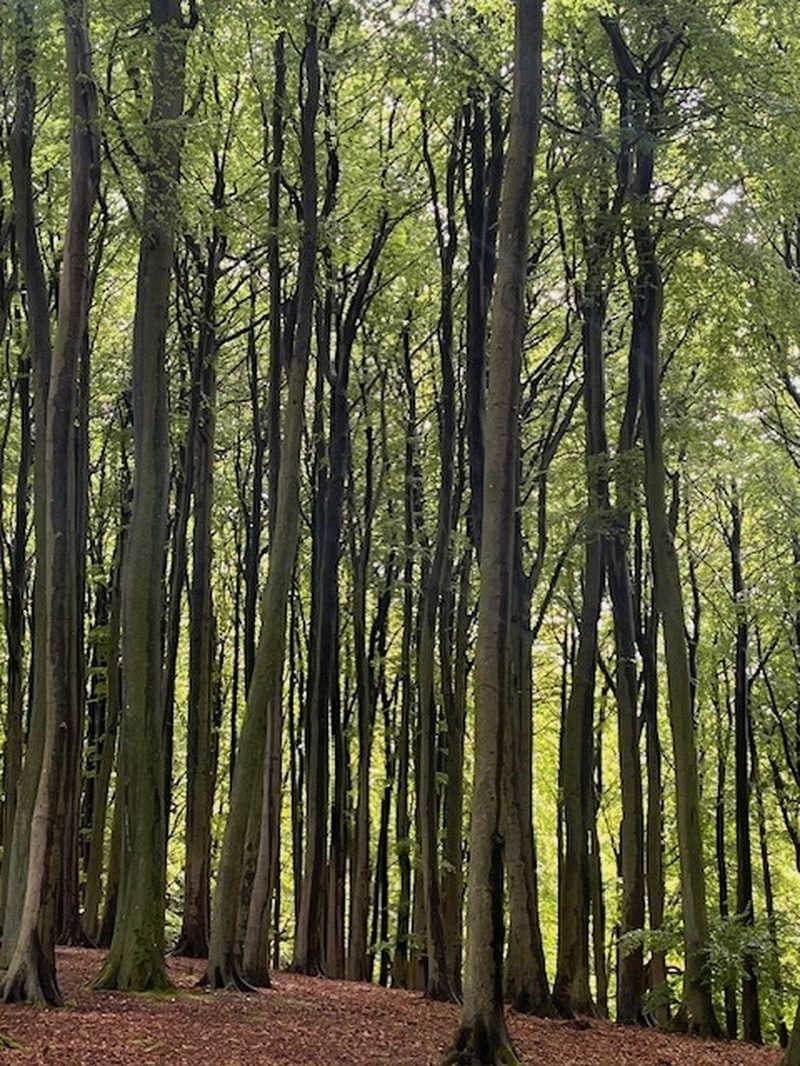
Life’s a beech in Jasmund’s wilder reaches
Enough art. Nature is its own masterpiece in this neck of the woods. Königsstuhl is inside the Jasmund National Park, Germany’s smallest, much of it populated by one of Europe’s few remaining beech forests. 4,000 years ago these primeval trees covered swathes of Europe. Nowadays this is a landscape to be protected, hence its UNESCO World Heritage status. The canopy of woods is awesome, but alongside there is heath and marsh and fecund water filled-hollows. All this is home for an abundance of rare plants – notably lady’s slipper orchids plus giant horsetail and coralroot bittercress (no I couldn’t identify them either). Tread carefully along the tracery of footpaths into the deep forest. If you are very lucky you might spot a white-tailed eagle or peregrine falcon.
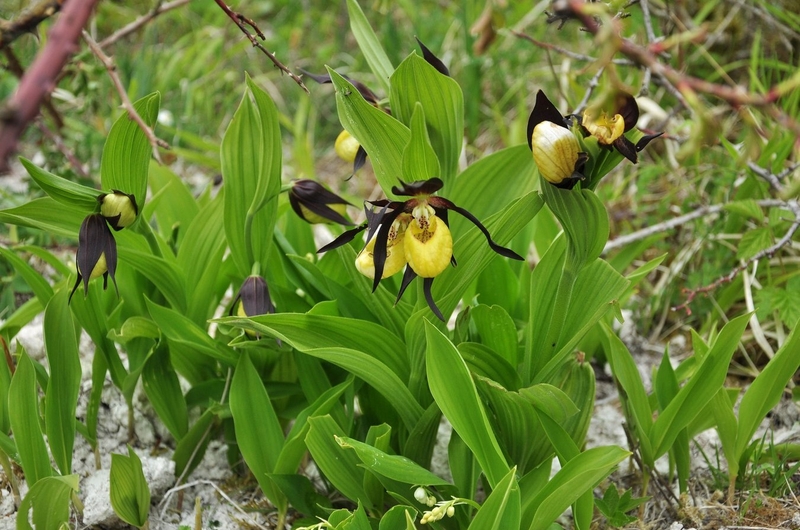

Or maybe make do with a painted lady butterfly fluttering by as you crunch through the beech mast. If butterflies are your thing visit the Alaris Butterfly Farm in nearby Sassnitz, where In a free-flight hall, 500 butterflies of 150 species can be admired at a temperature of 30 degrees.
All the chalk cliffs are prone to erosion, so proceed with caution if you clamber down to the shingle. In 2005, a spring thaw caused a huge landslide at Wissower Klinken, a scenic rival to Königsstuhl. Storms do bring the gift of amber, washing up the fossilised resin used in jewellery making. Another Rügen treasure (this one nutritional), sea buckthorn, grows in abundance close to the Cape Arkona lighthouse complex on the island’s rugged northern tip. Processed into a liquor or medicinal oil, it makes for a distinctive souvenir.

Stralsund – Rügen gateway haunted by its Hanseatic ghosts
The approach to Rügen gives no clue to all these riches. A flat, arable landscape runs for miles after you’ve crossed over on the soaring Rügenbrücke road bridge from the mainland. It initially feels a let-down after historic Stralsund.

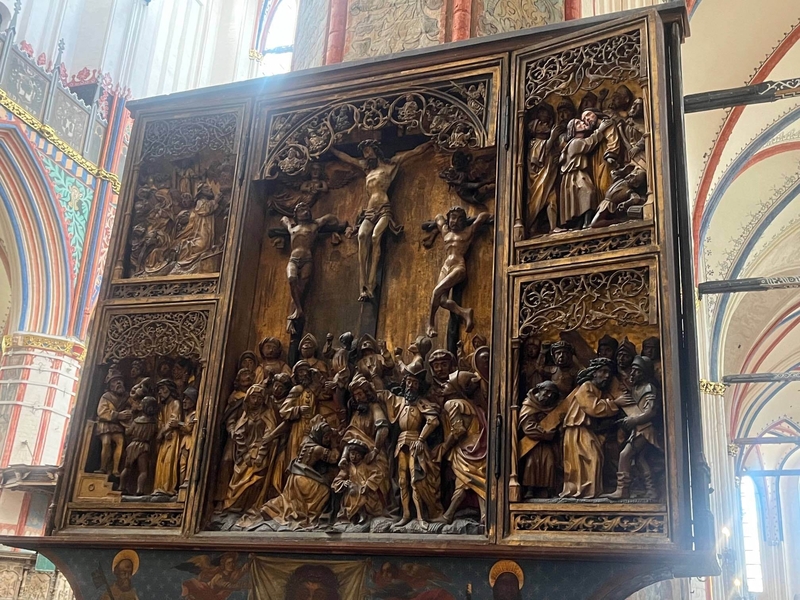
Only Lübeck, 200km to the west, retains more of its Hanseatic past. In the Old Town alone there are over 800 listed buildings, many dating back to the 14th century – its trio of great churches, St Michael’s, Marienkirche and Nikolaikirche, and the turreted Rathaus (13th century town hall) to smaller domestic gems.
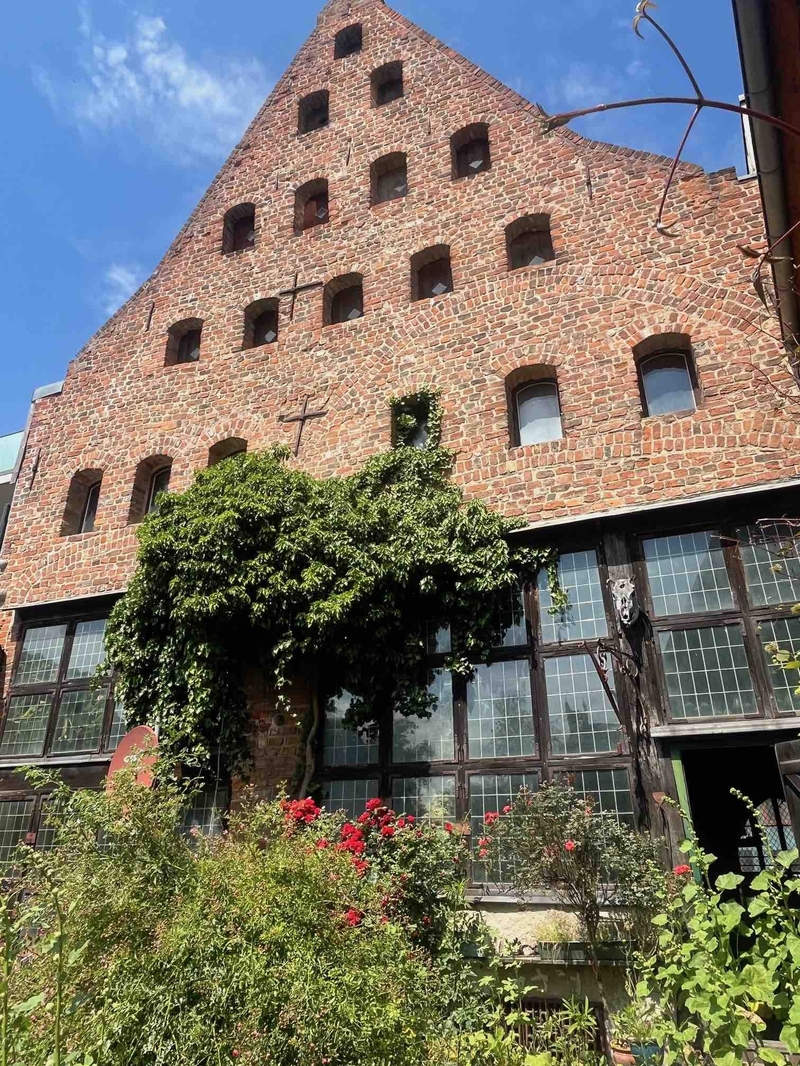

It’s a great place to ‘bummel’ – the German term for wandering aimlessly. Along Frankenstrasse I chanced upon the Giebelhaus, privately restored 50 years ago and free to visit. The panelled interior is a fascinating jumble, stand-out the Baroque-style gallery added in 1687. Step through the large window into the rear courtyard and gaze up at the stepped gables that earn the building its name.
It proudly bears the plaque ‘Europäische Route der Backsteingotik’ (European Trail of Brick Gothic). Such intense red brickwork is found all over the Stralsund, including the remains of the defensive ramparts that secured the port’s strategic status across centuries. For 200 years the Lutheran Swedish held onto it until Prussia prevailed.

What were once moats have swollen into lakes that surround the town on the three sides that don’t front onto the Strelasund Bay. It’s lovely to walk the parkland paths. Head for the harbour front past the ferries taking walkers out to the car-free holiday island of Hiddensee. Beyond the teeming marina and Gorch Fock I, a 1933 tall ship, you’ll come to the Ozeaneum.
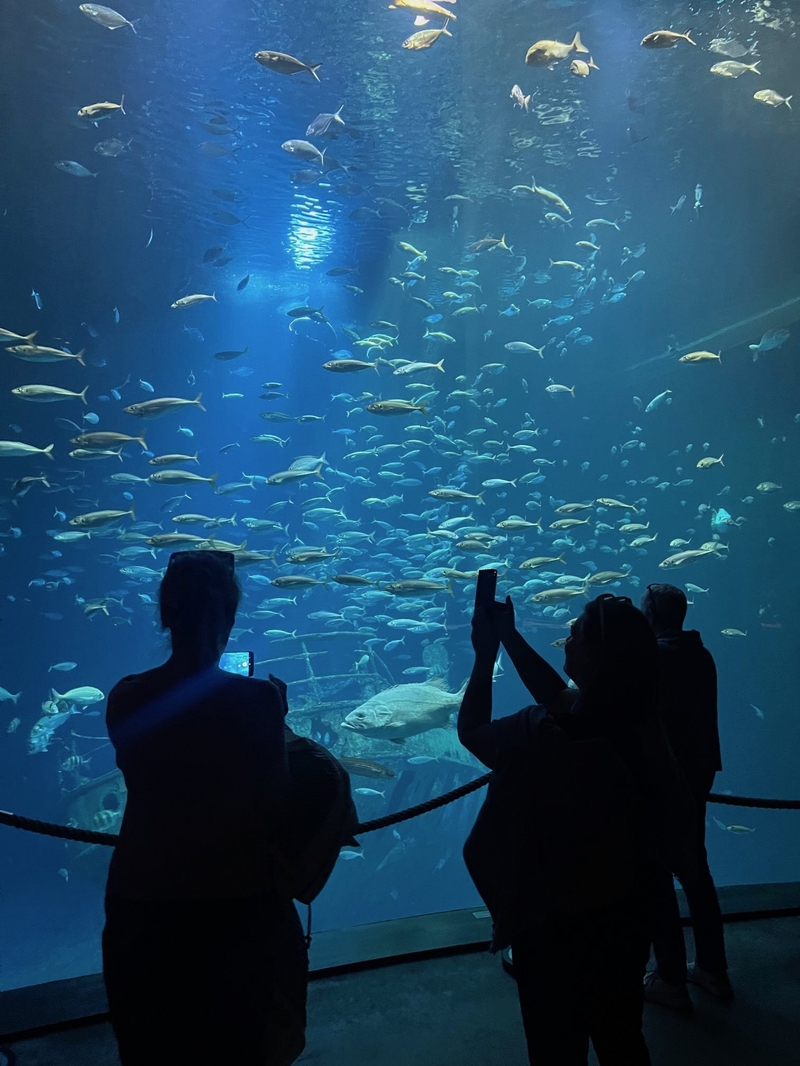
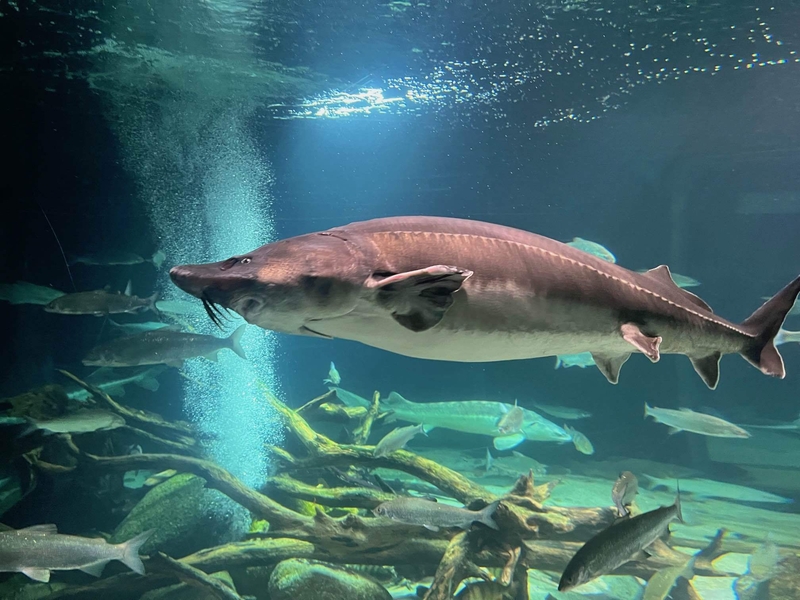
Built 15 years ago as the main attraction of the German Oceanographic Museum, it’s a swirling white counterpoint to all that brick. Its educational focus is on the sea life of the North Sea and the Baltic. So its 39 large aquaria are home to 7,000 animals from around those seas and it also features the world's largest exhibition devoted to whales. Oh, and not to be missed, the roof terrace offers not just the best view of the spired townscape but also a 10-strong colony of Humboldt penguins.
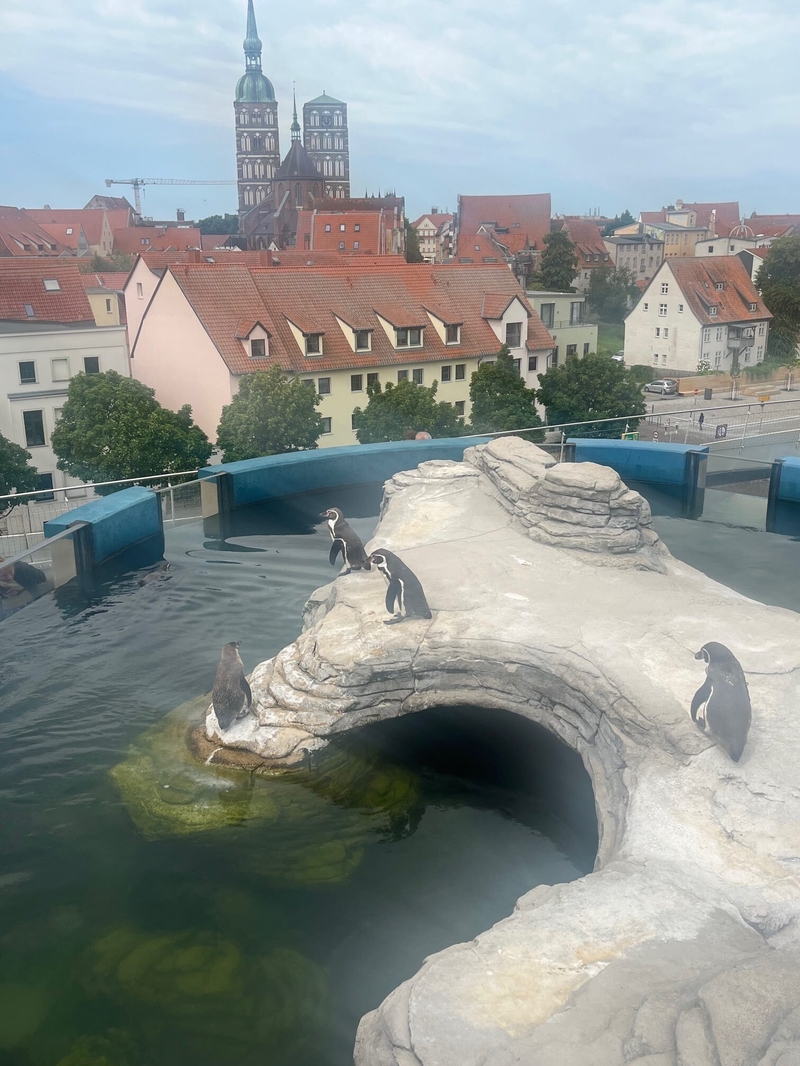
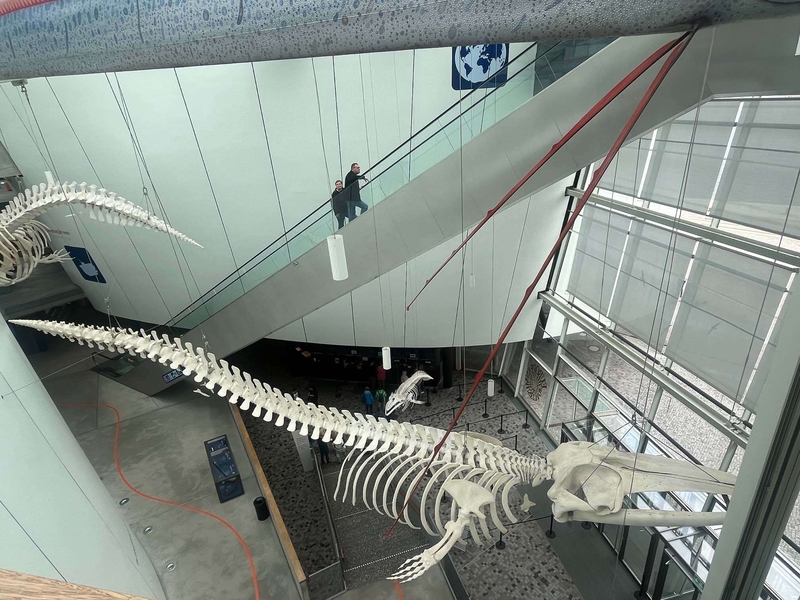
We lunched next door at buzzing Speicher 8, where we sampled surprisingly good white wine from Rügen with fish soup and soused herring. Several dozen other place, from shacks to floating eateries, were all doing a roaring trade in smoked fish rolls and locally brewed Störtebeker beer.
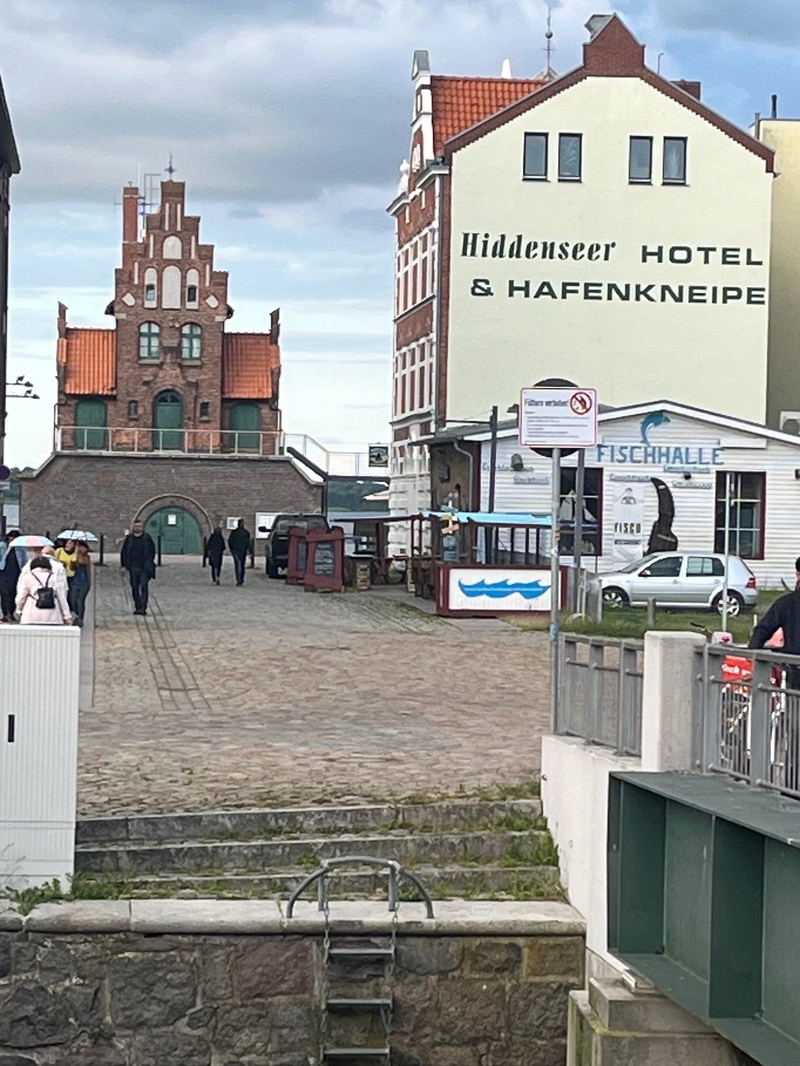

And it’s not just salt water codfish and herring you’ll find in this stretch of coast. Fresh water pike, zander and perch appear on menus because of the phenomenon known as ‘Bodden’. Yes, I was paying attention to our guide in the Ozeaneum. At this far end of the Baltic bodden are a kind of briny offshore lagoon where fresh water from the mainland meets salt water from the sea. The Bay of Greifswald is that kind of low-salinity fishing spot…
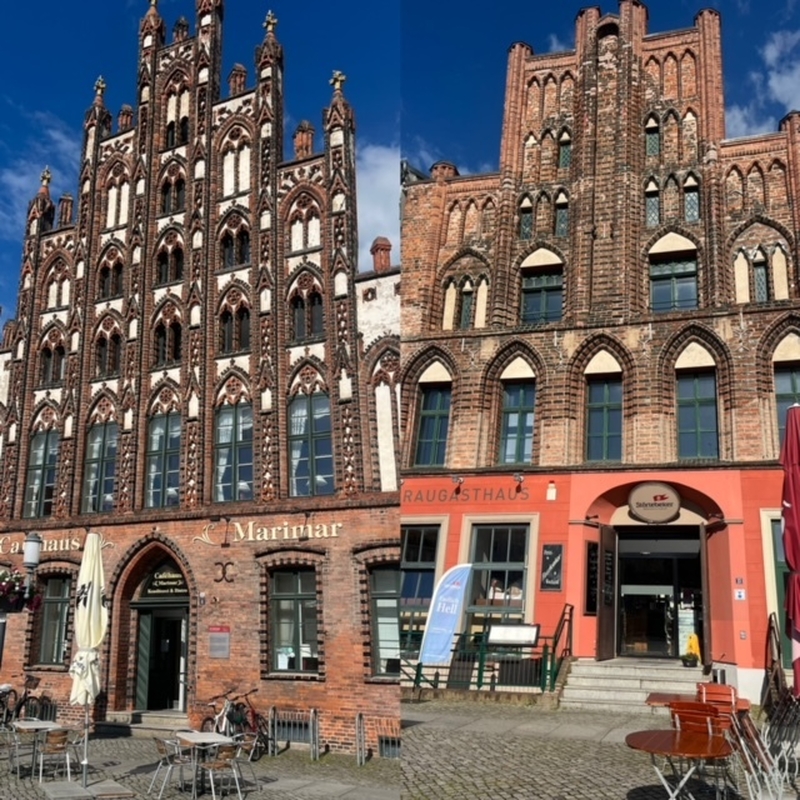
Greifswald – Caspar David is coming home
That Bay is also a breeding ground for great blue heron, swans and seagulls. But the town itself lies 8km inland from the mouth of the River Ryck… and the 800-year-old thatched fishing village of Wieck, now given over to pleasure. Its hand-operated wooden drawbridge opened to let us through on our afternoon pleasure cruise on board the traditional schooner ‘Vorpommern’. This restored 1950 vessel is a co-operative venture manned by enthusiasts. Highly recommended for a gentle foray around the breezy bay (wrap up warm) to scour the skies for birds and the waves for skimming sailboats.
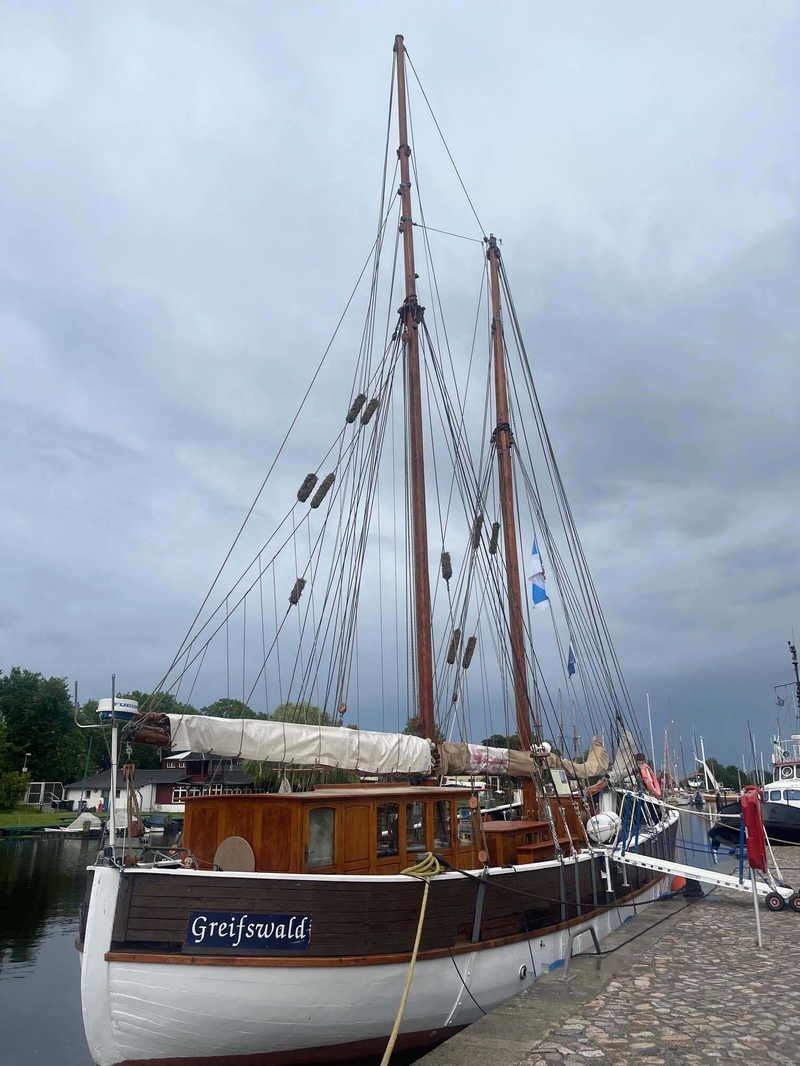

The handsome sailing ship is normally berthed on the Greifswald quayside beside the Fangenturm, a remnant of the medieval fortifications. From here it is a 10 walk up the hill to Greifswald’s main commercial drag, Langestrasse. There you’ll find the Caspar David Friedrich Centre.
Yes, that man again. The sixth of 10 children, from a family of candlemakers and soap boilers, he chose a very different path. He was baptised in the nearby Cathedral of St Nicholas and his Christian faith bolstered him after tragedy struck. In 1787, he was ice skating with his 13-year-old brother Christoffer when the ice broke and Caspar fell through. Christoffer dragged him free but in doing so drowned himself.
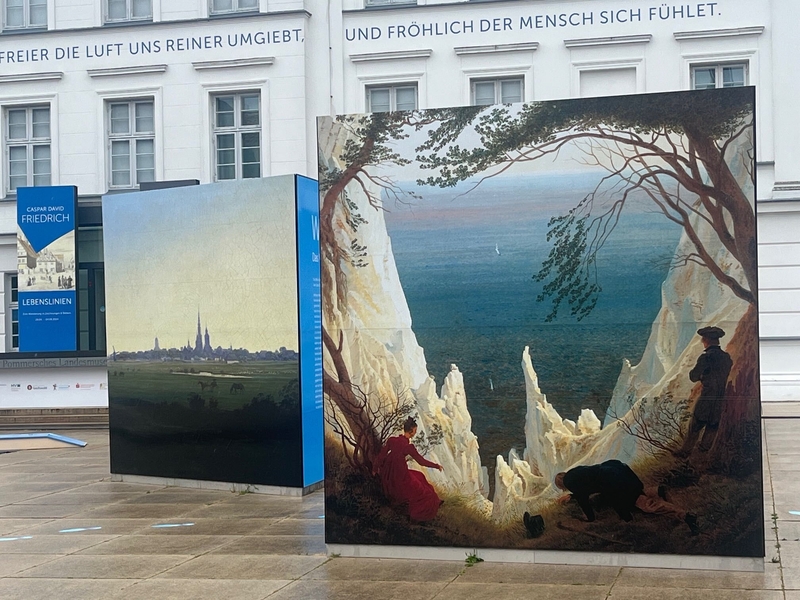
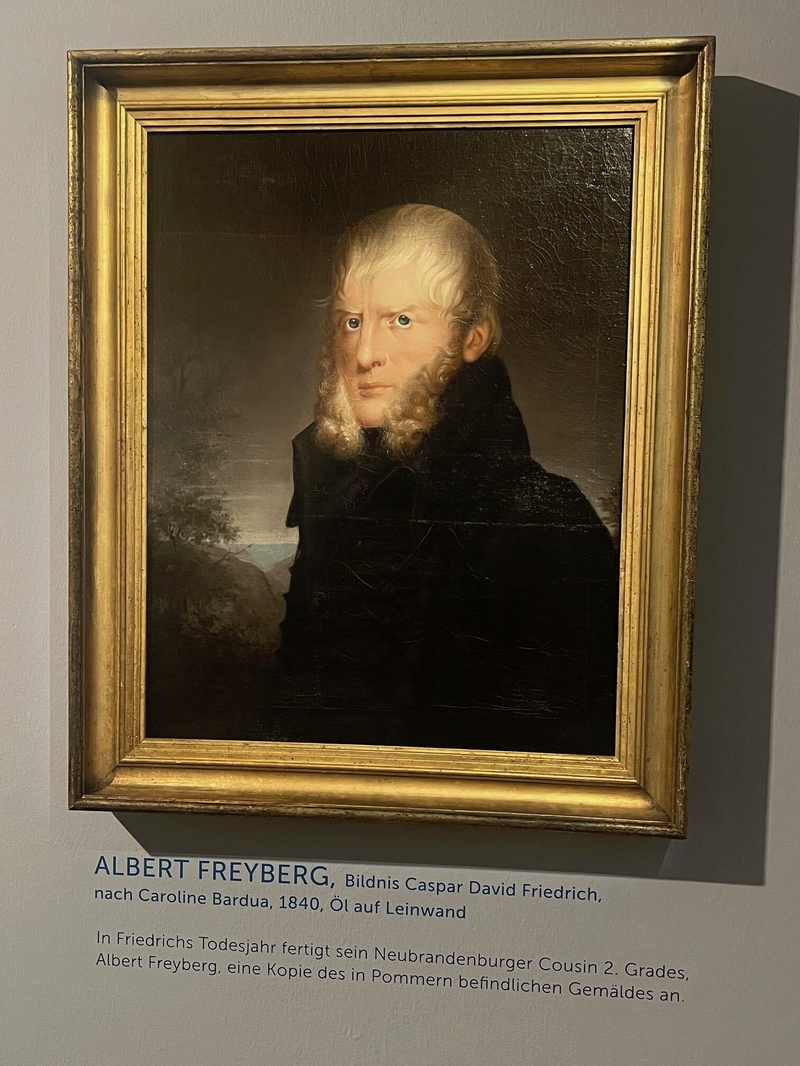
For fans the museum in his birthplace is well done, but there is a more vivid feeling of the artist in Greifswald’s outstanding Pomeranian State Museum with several exhibitions celebrating the anniversary year plus a gift shop where you can purchase Friedrich-branded wine and whisky. Most of the artist’s major works can be found in Berlin, Dresden and Hamburg, but the gallery here has some exquisite examples, including Ruins of Eldena in the Giant Mountains.

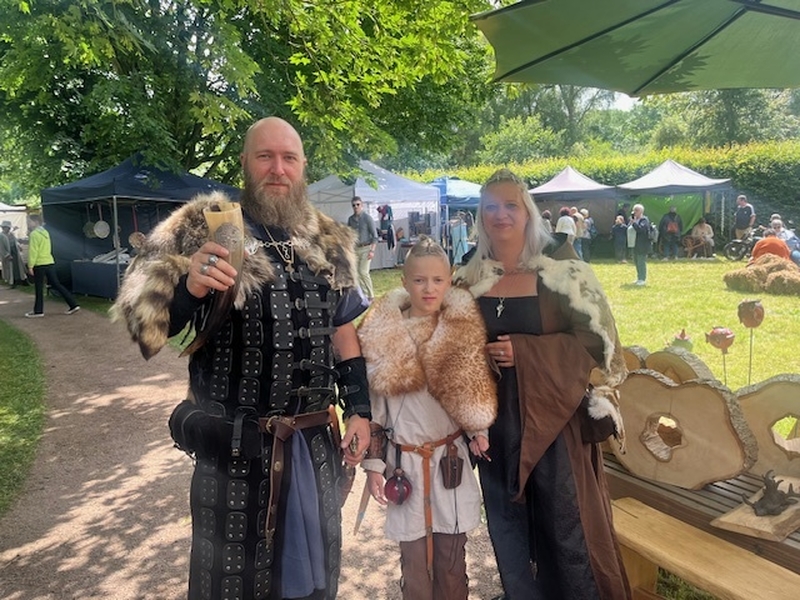
We visited the 13th century Cistercian abbey of that name that inspired the painting – it's near Wieck – but the atmospheric ruins among ancient oaks were populated on that particular Saturday afternoon by a Medieval Fayre. More Game of Thrones than Old Pomerania, whose tangled history is brilliantly charted in the eponymous museum. A further plus is Natürlich Büttners, attached to the complex. As both small scale manufacturer and cutting edge restaurant, it champions the region’s foodstuffs.
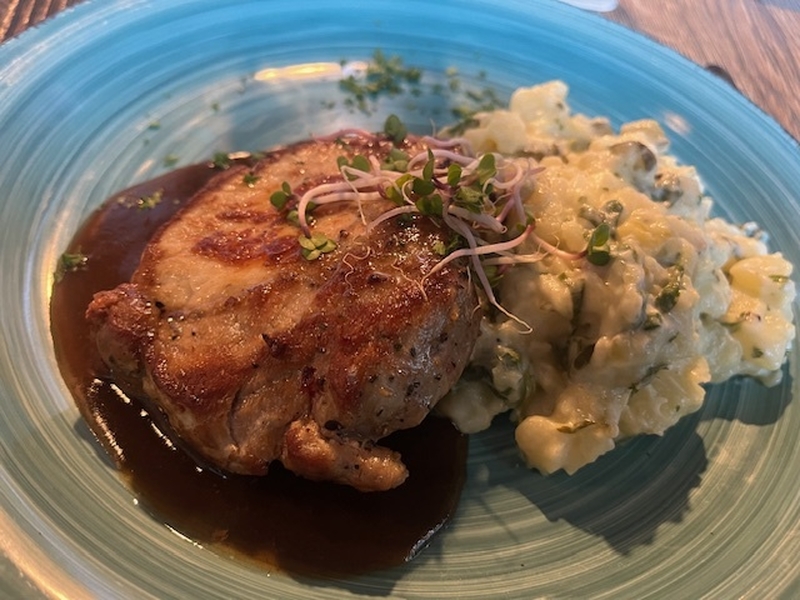

Like Stralsund Greifswald is dominated by three churches – here nicknamed Little Jacob, Long Michael and Fat Mary (the Marienkirche with an amazing Renaissance pulpit homage to Luther and his ilk). The vast square of the Marktplatz has its own riot of brick and gables. I’d suggest booking into the Störtebeker Braugasthaus at No.13. for dunkelbier and classic North German dishes. Appropriately, in the 14th century Klaus Störtebeker was the leader of ‘The Victual Brothers’, a gang of Baltic pirates preying on Hanseatic merchantmen. Eventually Störtebeker was hunted down and, so the story goes, beheaded in Hamburg.
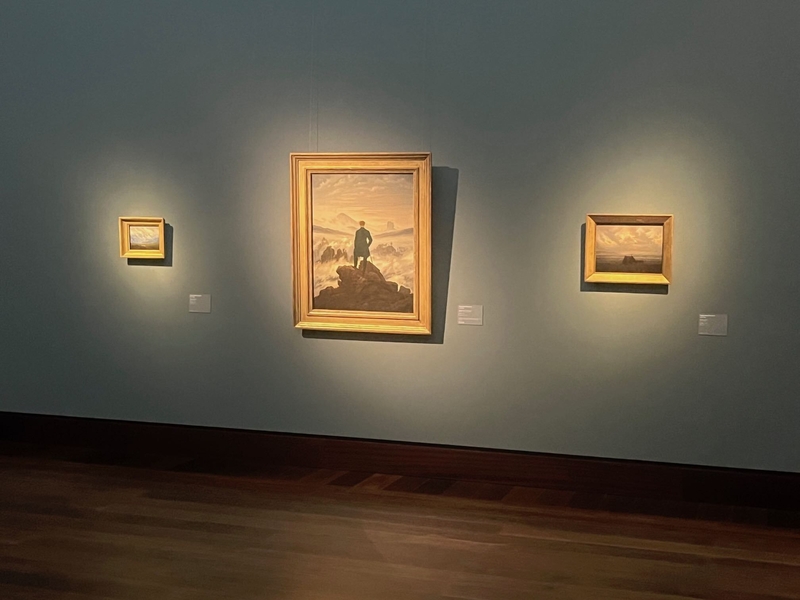
Fact file
Neil Sowerby flew from Manchester to Hamburg with easyJet and travelled on Deutsche Bahn trains for Greifswald and Stralsund. There’s an equivalent three hour rail journey from Berlin and its airport.
IN Stralsund he stayed at the Maakt Aparthotel, Tribseer Str. 22, 18439 and, just outside Greifswald, at the Hotel Stettinher Hof, Theodor-Körner-Straße 20, 17498 Neuenkirchen.
For all German tourism information visit this official link. There are Caspar David Friedrich anniversary events across Germany until the end of 2024.
Main image: Roberto Copello














